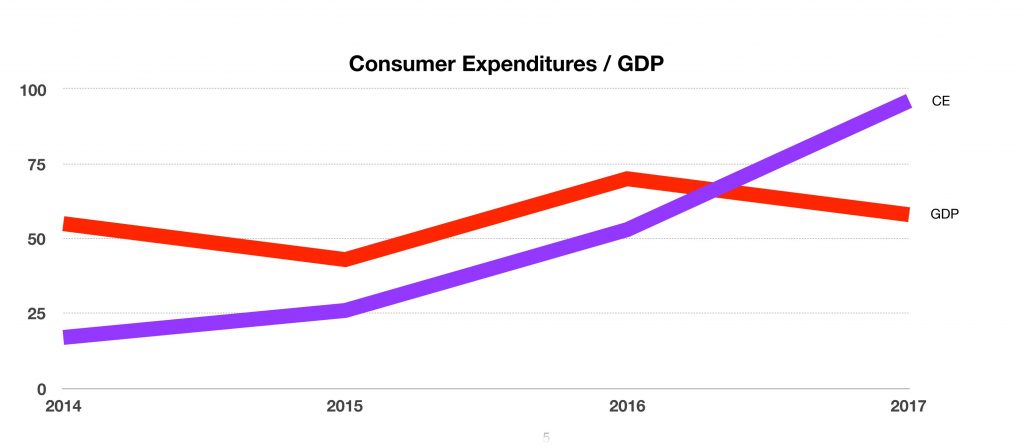

The past four years have seen consumer spending exceeding GDP. Various factors drive consumer spending, including sentiment, optimism, wages, and demographics. GDP grew at a 2.6% annual rate in the fourth quarter, while consumer spending grew at a 3.8% annual rate.
Historically, periods where consumer spending has grown faster than economic growth, as measured by GDP, inflation has evolved. Consumer expenditures include the purchase of furniture, appliances, food, autos, and recreational activities.
Recent data from the Department of Labor show that consumers have more disposable income to spend. Economists believe that since consumer expenditures represent nearly 70% of GDP, it’s only a matter of time before GDP catches up.
This is a good news / bad news scenario. Too much optimism and consumer spending lends to inflation and erosion of real growth of an improved GDP. However, if optimism and consumer spending increase at a slow, steady pace without stoking inflationary fears, the market will view this more positively as real growth in wages and wealth. The market trys to figure which scenario is playing out on a daily basis – hence higher volatility on some days than others.
Sincerely,
Kent G. Forsey, CFP®
President

